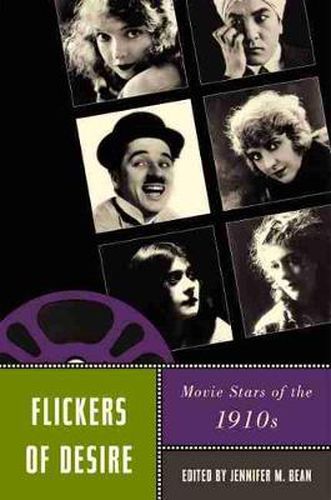Readings Newsletter
Become a Readings Member to make your shopping experience even easier.
Sign in or sign up for free!
You’re not far away from qualifying for FREE standard shipping within Australia
You’ve qualified for FREE standard shipping within Australia
The cart is loading…






Today, we are so accustomed to consuming the amplified lives of film stars that the origins of the phenomenon may seem inevitable in retrospect. But the conjunction of the terms movie and star was inconceivable prior to the 1910s. Flickers of Desire explores the emergence of this mass cultural phenomenon, asking how and why a cinema that did not even run screen credits developed so quickly into a venue in which performers became the American film industry’s most lucrative mode of product individuation. Contributors chart the rise of American cinema’s first galaxy of stars through a variety of archival sources–newspaper columns, popular journals, fan magazines, cartoons, dolls, postcards, scrapbooks, personal letters, limericks, and dances. The iconic status of Charlie Chaplin’s little tramp, Mary Pickford’s golden curls, Pearl White’s daring stunts, or Sessue Hayakawa’s expressionless mask reflect the wild diversity of a public’s desired ideals, while Theda Bara’s seductive turn as the embodiment of feminine evil, George Beban’s performance as a sympathetic Italian immigrant, or G. M. Anderson’s creation of the heroic cowboy/outlaw character transformed the fantasies that shaped American filmmaking and its vital role in society.
$9.00 standard shipping within Australia
FREE standard shipping within Australia for orders over $100.00
Express & International shipping calculated at checkout
Today, we are so accustomed to consuming the amplified lives of film stars that the origins of the phenomenon may seem inevitable in retrospect. But the conjunction of the terms movie and star was inconceivable prior to the 1910s. Flickers of Desire explores the emergence of this mass cultural phenomenon, asking how and why a cinema that did not even run screen credits developed so quickly into a venue in which performers became the American film industry’s most lucrative mode of product individuation. Contributors chart the rise of American cinema’s first galaxy of stars through a variety of archival sources–newspaper columns, popular journals, fan magazines, cartoons, dolls, postcards, scrapbooks, personal letters, limericks, and dances. The iconic status of Charlie Chaplin’s little tramp, Mary Pickford’s golden curls, Pearl White’s daring stunts, or Sessue Hayakawa’s expressionless mask reflect the wild diversity of a public’s desired ideals, while Theda Bara’s seductive turn as the embodiment of feminine evil, George Beban’s performance as a sympathetic Italian immigrant, or G. M. Anderson’s creation of the heroic cowboy/outlaw character transformed the fantasies that shaped American filmmaking and its vital role in society.